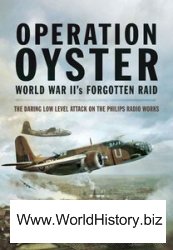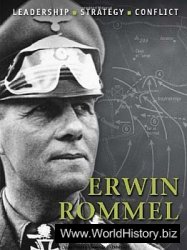ST. FELICIEN AIR SERVICES, LTD.: Canada (1957-1980). Paul, Luc, and Gilles Dumas join Marc-Auerele Tremblay to found St. Feli-cien in 1957 at the Quebec city of the same name. Passenger and cargo services are undertaken with Douglas DC-3s in the Ungava Bay region, linking the company’s base with such destinations as Roberval, Fort Chimo, Shcefferville, and Quebec City.
Two decades later, a DC-3 is damaged beyond repair as the result of a bad landing at Asbestos Hill on May 20, 1976.
In 1978, Chairman Paul Dumas oversees a workforce of 65 and a fleet comprising 3 DC-3s, 3 Beech 18s, and 1 de Havilland Canada DHC-2 Beaver. Unable to weather higher fuel prices at decade’s end, the carrier folds in 1980.
ST. LUCIA AIRWAYS, LTD.: St. Lucia (1975-1987). St. Lucia is established on the Caribbean island of that name in 1975 to provide general charter services on the island and to neighboring Barbados and Martinique. Employing 3 Britten-Norman BN-2 Islanders and 1 de Havilland Canada DHC-6-100 Twin Otter, the airline initiates revenue services between Hewaanorra Airport (near Vieux Fort in the South) and Vigie Airport (near Castries in the northwest).
In 1982, the company acquires a Boeing 707-323C Stratofreighter with which to operate all-cargo services to Miami. A Lockheed L-100-20 Hercules freighter is acquired in 1984, followed by a second B-707-323C in 1985.
Flights continue apace in 1986, during which year a new, light blue color scheme is unveiled. Suggestions now surface in the media that the company has been operating covert contract service flights to Iran on behalf of the U. S. CIA. It is also demonstrated that a Stratofreighter has made four flights, between January and April, transporting arms from an American military base to a known CIA supply base in Zaire, where they are turned over to UNITA forces from civil war-torn Angola.
Unable to maintain economic viability or escape the media spotlight, the airline shuts its doors in 1987.
ST. PETERSBURG-TAMPA AIRBOAT LINE: United States (1913-1914). Organized on December 4, 1913 by electrical engineer Paul E. Fansler with backing from his business manager brother Perci-val and local business leaders, the St. Petersburg-Tampa Airboat Line signs a subsidy contract with the city of St. Petersburg, Florida, on December 13. The St. Petersburg Board of Trade is not only anxious to promote its region but to speed passage across the bay, which now can only be transversed by a $1, 3-hr. steamboat voyage or a grueling 64-mi., 12-hr. train ride. Four days later, on the tenth anniversary of the Wright Brothers’ first powered flight, the city also signs a contract with St. Louis aircraft manufacturer Thomas W. Benoist for the operation of the airline. Fansler and Benoist select the former’s $4,150 flying boat Type XIV for the service.
Two units, together with a Type XIII with which to open a flying school, are provided. All arrive by train, together with Benoist’s well-known chief pilot Tony Jannus and his chief mechanic J. D. Smith. A Type XIV, No. 43, is assembled and test flown on December 30 and 31.
With the natty Jannus (outfitted in slacks, a blazer, and a bow tie) at the controls, Benoist’s biplane inaugurates the world’s first for-profit, roundtrip airline schedule. With ex-St. Petersburg Mayor Abe C. Pheil as passenger (he paid $400 at auction for the privilege), the plane flies an 18-mi. route from the St. Petersburg Yacht Basin to the mouth of Tampa’s Hillsboro River at 10 a. m. on Friday, January 1, 1914. The departure is made before a crowd of 3,000 people, who had participated in a parade to the waterfront, enjoyed a performance by a band from the Johnny Jones Show, and for a few, bid in the lottery won by Pheil.
The inaugural trip down to the city made famous by its cigars takes 23 min. (including a nonscheduled stop caused by engine trouble). Jan-nus and Pheil are greeted by 2,000 well-wishers and newspaper reporters seeking quotes and taking photos. The former mayor calls his hometown to let the citizens know of their arrival, before departing north with pilot Jannus. The return flight to St. Petersburg is completed at 11:30 a. m., having been operated in 20 min. In reporting the inaugural flight, The New York Times coins the word “airliner” to describe the Benoist flying boat.
Another auction is held (the New Years’ crowd has not dispersed) and Noel A. Mitchell successfully pledges $175 for the afternoon roundtrip. On January 2, Mrs. L. A. Whitney, wife of the Chamber of Commerce secretary, makes the trip to Tampa and back, becoming in the process the first woman passenger to fly with a fixed-wing scheduled airline. The Tampa Tribune in the day’s edition correctly identifies the Fansler operation as “the first commercial air ship line,” allowing of course that it was understood that the aircraft employed was fixed-wing and not a dirigible.
Flying a regular timetable twice a day thereafter, this premier scheduled carrier transports one-way resort traffic and cargo at $5 per head or 100 pounds of freight. The response by the public to the new service is warm and of the $50-per-day January subsidy ($1,550), $360 can be paid back at month’s end. A need for additional capacity results in the addition of a second, slightly larger, Benoist seaplane flown by Roger Jannus, Tony’s brother.
Although St. Petersburg is impressed with the operation, the City of Tampa at one point attempts to close it down. Employing family ties to the Secretary of Commerce, the Jannus brothers are not only able to quash the effort, but to obtain the first pilot license issued in the U. S. Tony’s February 17 certificate is somewhat irregular being, in fact, a ship-pilot’s license with the word “steamship” crossed out and written over with the word “aeroplane.”
Despite a $25-per-day subsidy for February and March, the company is able to cover expenses in those months. By the time Fansler’s contract expires on March 31,1,204 passengers have been safely transported and only 3 days have been lost to weather and 4 to mechanical failure, with aircraft repair bills totaling a mere $100. When the Mexican crisis and the end of the winter tourist season coincide in April, demand for this air transportation falls off and the inaugural air carrier closes its doors when the city’s contract with Benoist is concluded.
Of the four major personalities involved in this enterprise, the Jannus brothers are subsequently killed in flying accidents and designer Benoist dies in Ohio in 1917 when he leans out of a streetcar and is hit by telephone pole. The Tony Jannus Award is established in 1963 to recognize outstanding achievement in scheduled commercial aviation while, in 1984, the Florida Aviation Historical Society constructs a flying replica of the Benoist XIV. The Society’s aviation museum is opened at St. Petersburg in January 1993.
ST. TAMMANY-GULF COAST AIRWAYS: United States (19271929). During the summer of 1927, St. Tammany-Gulf Coast is organized at New Orleans to haul passengers over a 483-mi., multistop flight to Atlanta, via Mobile and Birmingham. With initial capitalization of $85,000 and a single Fokker Model 4 Universal, service is inaugurated on August 20. Late in the year, company officials make a bid for the new U. S. Post Office Contract Air Mail Route No. 23 (CAM-23) which parallels their network.
The contract is awarded and airmail flights to Atlanta from New Orleans commence on May 1, 1928. In October, New Orleans interests form Gulf Air Lines as a holding company for St. Tammany, which now becomes the airline operating subsidiary minus the St. Tammany prefix. Capitalization is increased to $225,000, which allows Gulf Coast Airways to purchase a Fokker Model 8 Super Universal.
When Tennessee financier A. P. Barrett forms his Southern Air Transport System on March 31, 1929, GCA is purchased and merged, becoming an operating division.
ST. THOMAS TAXI AIR: United States (1970-1976). This air taxi operator is set up at San Juan, Puerto Rico, in 1970 to provide scheduled
Beech 18 services to St. Thomas in the U. S. Virgin Islands. Daily roundtrips are duly inaugurated and are sustained through 1976.
ST. VINCENT AND GRENADINES AIR SERVICE, LTD.: St. Vincent and the Grenadines (1976-1982). The national airline of St. Vincent and the Grenadines is set up at Kingtown in March 1976 to provide services to the neighboring Windward Islands. The initial fleet comprises a Britten-Norman BN-2A Trislander and a Piper Apache; however, the latter aircraft is not retained.
The carrier is unable to survive the high costs occasioned by rising fuel prices and the world economic downturn and disappears in 1982.




 World History
World History









